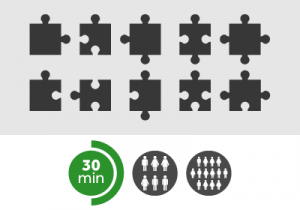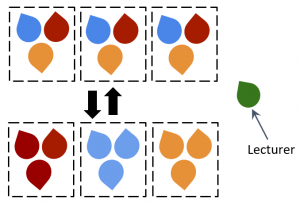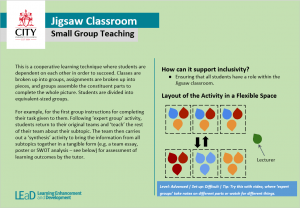
Group and whole class activity
Adapted from Learning at City’s series of blog posts around creative teaching activities. Check the original post for more details about the activity and an example of practice.
Classes are broken up into groups, assignments are broken up into pieces, and groups assemble the constituent parts to complete the whole picture.
Instructions
- divide the class into equivalent-sized groups
- assign students within each team a number
- divide the subject material into the same number of parts as there are groups
- assign subtopics to each team member
- develop learning activities or tasks around the material
- reassign students into ‘expert groups’ (e.g. all #1s together) and issue instructions to these groups
- following ‘expert group’ activity, students return to original teams and teach rest of their team about the subtopic
- present a team synthesis activity to bring the information from all subtopics together (e.g. a team essay, group problem solving)

What the activity achieves:
- reduces distrust and hostility between students by ensuring reliance upon others for academic success
- peer learning, students effectively teaching each other
- encourages engagement, listening, teamwork and empathy for others
- promotes a deeper understanding of the subject material than a more “passiv” method
Alternatives:
The model can be replicated for online teaching using virtual breakout rooms during the webinar.
This activity is also part of a series of teaching activity cards developed by LEaD. Click the card picture to access it and other activities in a printable card format.
